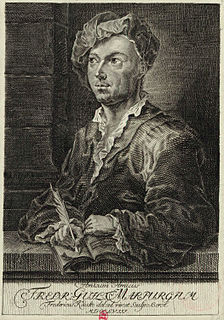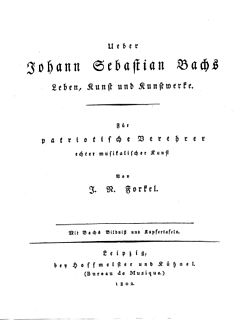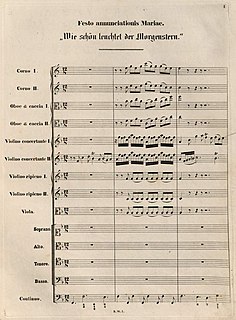| Volume of whole series | Volume | Title | Publisher | Date |
|---|
| 1 | erster Jahrgang | E. F. dall' Abaco / ausgewählte Werke, erster Theil | Verlag von Breitkopf & Härtel in Leipzig | 1900 |
| 2 | zweiter Jahrgang / Band I | Klavierwerke von Johann und Wilhelm Hieronymus Pachelbel | Verlag von Breitkopf & Härtel in Leipzig | 1901 |
| 3 | zweiter Jahrgang / Band II | ausgewählte Werke von J. K. Kerll erster Theil | Verlag von Breitkopf & Härtel in Leipzig | 1901 |
| 4 | dritter Jahrgang / Band I | Sinfonien der pfalzbayerischen Schule / (Mannheimer Symphoniker) / I. | Verlag von Breitkopf & Härtel in Leipzig | 1902 |
| 5 | dritter Jahrgang / Band II | Ludwig Senfls Werke erster Teil [12] | Verlag von Breitkopf & Härtel in Leipzig | 1903 |
| 6 | vierter Jahrgang / I. Band | Orgelkompositionen von Johann Pachelbel / nebst beigefügten Stücken von Hieronymus Pachelbel | Verlag von Breitkopf & Härtel in Leipzig | 1903 |
| 7 | vierter Jahrgang / II. Band | ausgewählte Werke von Christian Erbach, erster Teil / Werke Hans Leo Hasslers, erster Teil | Verlag von Breitkopf & Härtel in Leipzig | 1903 |
| 8 | fünfter Jahrgang (Doppelband) / I. Lieferung | Werke Hans Leo Hasslers, zweiter Teil / (Bermerkungen zur Biographie Hans Leo Hasslers und seiner Brüder, / sowie zur Musikgeschichte der Städt Nurnberg und Augsburg / im 16. und zu Anfang des 17. Jahrhunderts von A. Sandberger | Verlag von Breitkopf & Härtel in Leipzig | 1904 |
| 9 | fünfter Jahrgang / II. Lieferung | Werke Hans Leo Hasslers, zweiter Teil / (Notenteil und Einleitung von R. Schwartz) | Verlag von Breitkopf & Härtel in Leipzig | 1904 |
| 10 | sechster Jahrgang / I. Band | Nürnberger Meister der zweiten Hälfte des 17.Jahrhunderts / geistliche Konzerte und Kirchenkantaten / (eingeleitet und herausgegeben von Max Seiffert) | Verlag von Breitkopf & Härtel in Leipzig | 1905 |
| 11 | sechster Jahrgang / II. Band | ausgewählte Werke von Agostino Steffani erster Teil / herausgegeben von Alfred Einstein und Adolf Sandberger | Verlag von Breitkopf & Härtel in Leipzig | 1905 |
| 12 | siebenter Jahrgang / I. Band | ausgewählte Werke von Johann Staden erster Teil / published by Eugen Schmitz | Verlag von Breitkopf & Härtel in Leipzig | 1906 |
| 13 | siebenter Jahrgang / II. Band | Sinfonien der pfalzbayerischen Schule / (Mannheimer Symphoniker) / II. Teil I. Hälfte | Verlag von Breitkopf & Härtel in Leipzig | 1906 |
| 14 | achter Jahrgang / I. Band | ausgewählte Werke von Johann Staden zweiter Teil / herausgegeben von Eugen Schmitz | Verlag von Breitkopf & Härtel in Leipzig | 1907 |
| 15 | achter Jahrgang / Band II | Sinfonien der pfalzbayerischen Schule / (Mannheimer Symphoniker) / II, 2 / herausgegeben von Hugo Riemann | Verlag von Breitkopf & Härtel in Leipzig | 1907 |
| 16 | neunter Jahrgang / Band I | Evaristo Felice dall' Abaco / ausgewählte Werke / zweiter Teil / herausgegeben von Adolf Sandberger | Verlag von Breitkopf & Härtel in Leipzig | 1908 |
| 17 | neunter Jahrgang / Band II | Leopold Mozart / ausgewählte Werke / herausgegeben von Max Seiffert | Verlag von Breitkopf & Härtel in Leipzig | 1908 |
| 18 | zehnter Jahrgang / Band I | Gregor Aichinger / ausgewählte Werke / introduced and edited by Theodor Kroyer | Verlag von Breitkopf & Härtel in Leipzig | 1909 |
| 19 | zehnter Jahrgang / Band II | Adam Gumpelzhaimer / ausgewählte Werke / eingeleitet und herausgegeben von Otto Mayr | Verlag von Breitkopf & Härtel in Leipzig | 1909 |
| 20 | elfter Jahrgang / Band I | Werke Hans Leo Hasslers, dritter Teil / eingeleitet und herausgegeben von Rudolf Schwartz | Verlag von Breitkopf & Härtel in Leipzig | 1910 |
| 21 | elfter Jahrgang / Band II / (einundzwanstigster Band der ganzen Reihe) | ausgewählte Werke von Agostino Steffani, zweiter Teil / (erster Band der Opern) / herausgegeben von Hugo Riemann | Verlag von Breitkopf & Härtel in Leipzig | 1912 |
| 22 | zwölfter Jahrgang / Band I / (zweiundzwanzigster Band der ganzen Reihe) | ausgewählte Sinfonien von Anton Rosetti / eingeleitet und herausgegeben von Oskar Kaul | Verlag von Breitkopf & Härtel in Leipzig | 1912 |
| 23 | zwölfter Jahrgang / Band II / (dreiundzwanstigster Band der ganzen Reihe) | ausgewählte Werke von Agostino Steffani, zweiter Teil / (zweiter Band der Opern) / herausgegeben von Hugo Riemann | Verlag von Breitkopf & Härtel in Leipzig | 1912 |
| 24 | dreizehnter Jahrgang / vierundzwanstigster Band der ganzen Reihe) | ausgewählte Werke von Tommaso Traëtta / eingeleitet und herausgegeben von Hugo Goldschmidt | Verlag von Breitkopf & Härtel in Leipzig | 1913 |
| 25 | vierzehnter Jahrgang / Band I / (fünfundzwanstigster Band der ganzen Reihe) | ausgewählte Werke von Johannes Erasmus Kindermann / erster Teil / herausgegeben von Hugo Riemann | Verlag von Breitkopf & Härtel in Leipzig | 1913 |
| 26 | vierzehnter Jahrgang / Band II / (sechsundzwanzigster Band der ganzen Reihe) | Chr. W. Gluck, Le nozze d'Ercole e d'Ebe / eingeleitet und herausgegeben von Hermann Abert | Verlag von Breitkopf & Härtel in Leipzig | 1914 |
| 27 | fünfzehnter Jahrgang / (siebenundzwanzigster Band der ganzen Reihe) | Mannheimer Kammermusik des 18.Jahrhunderts / erster Teil / eingeleitet und herausgegeben von Hugo Riemann | Verlag von Breitkopf & Härtel in Leipzig | 1914 |
| 28 | sechzehnter Jahrgang / (achtundzwanzigster Band der ganzen Reihe) | Mannheimer Kammermusik des 18.Jahrjunderts / zweiter Teil / eingeleitet und herausgegeben von Hugo Riemann | Verlag von Breitkopf & Härtel in Leipzig | 1915 |
| 29 | siebzehnter Jahrgang / (neunundzwanstigster Band der ganzen Reihe) | ausgewählte Werke von Tommaso Traëtta / zweiter Teil / herausgegeben von Hugo Goldschmidt | Verlag von Breitkopf & Härtel in Leipzig | 1916 |
| 30 | achtzehnter Jahrgang / (dreissigster Band der ganzen Reihe) | Joh. Krieger, Franz Xaver Anton Murschhauser u. Joh. Philipp Krieger / gesammelte Werke für Klavier und Orgel / Herausgegeben von Max Seiffert | Verlag von Breitkopf & Härtel in Leipzig | 1917 |
| 31 | neunzehnter und zwanzigster Jahrgang / (einunddreissigster Band der ganzen Reihe) | Pietro Torri, ausgewählte Werke, Teil I / eingeleitet und herausgegeben von H. Junker | Verlag von Breitkopf & Härtel in Leipzig | 1920 |
| 32 | einundzwanzigster Jahrgang / bis vierundzwanzigster Jahrgang / (zweiunddreissigster Band der ganzen Reihe) | Johann Erasmus Kindermann, ausgewählte Werke / zweiter Teil / herausgegeben nach den hinterlassenen Materialien von / Felix Schreiber / und eingeleitet von / Bertha Antonia Wallner | Augsburg 1924 | Verlag von Dr. Benno Filser & Co., Kunstanstalt |
| 33 | fünfundzwanzigster Jahrgang / (dreiunddreissigster Band der ganzen Reihe) | Anton Rosetti / ausgewählte Werke – zweiter Teil / ausgewählte Kammermusikwerke / nebst einem Instrumentalkonzert / eingeleitet und herausgegeben von Oskar Kaul | Augsburg 1925 | Dr. Benno Filser Verlag G. M. B. H., Augsburg |
| 34 | sechsundzwanzigster Jahrgang / (vierunddreissigster Band der ganzen Reihe) | Jacobus de Kerle / ausgewählte Werke – erster Teil / die „Preces speciales etc.‟ / für das Konzil der Trient / 1562 / eingeleitet und herausgegeben von / Otto Ursprung | Augsburg 1926 | Dr. Benno Filser Verlag G. M. B. H., Augsburg |
| 35 | siebenundzwanzigster und achtundzwanzigster Jahrgang / (fünfunddreissigster Band der ganzen Reihe) | Johann Christoph Pez / ausgewählte Werke | Augsburg 1928 | Dr. Benno Filser Verlag G. M. B. H. |
| 36 | neunundzwanzigster und dreissigster Jahrgang / (sechsunddreissigster Band der ganzen Reihe) | Andreas Raselius / ausgewählte Werke | Augsburg 1931 | Dr. Benno Filser Verlag G. M. B. H. |










